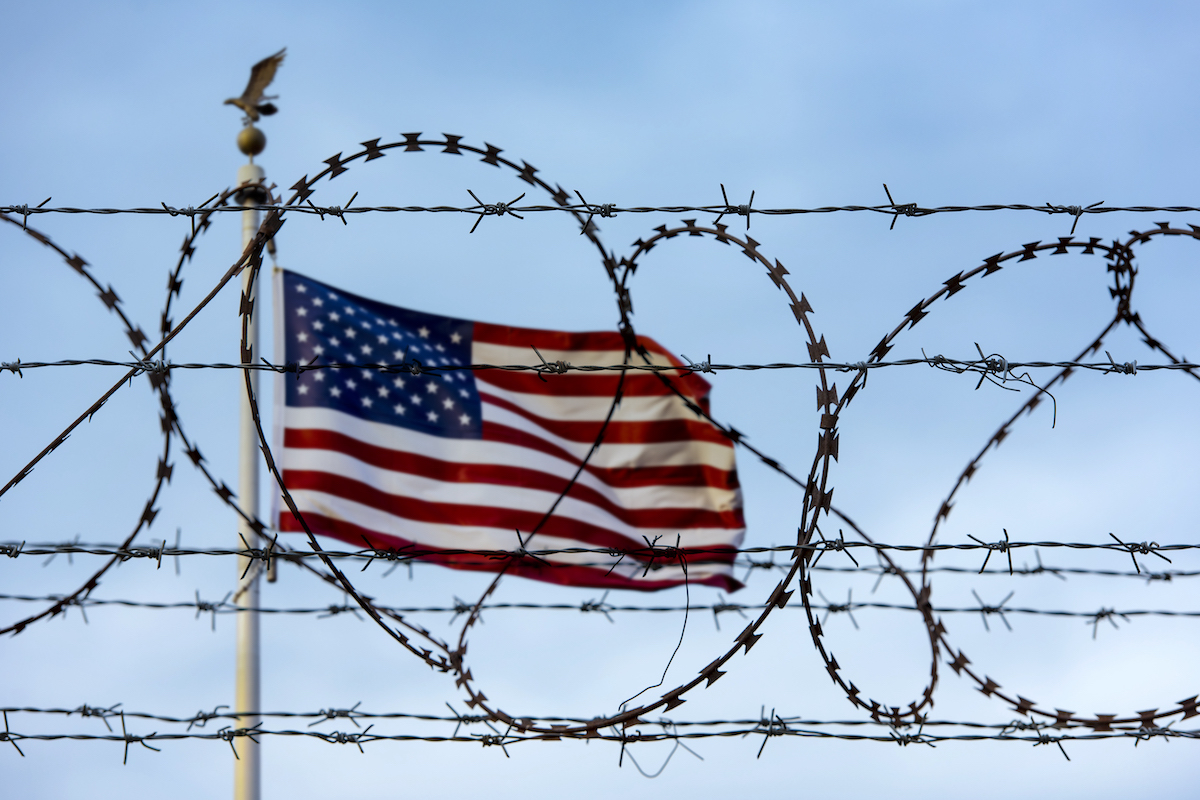Leer en español
Editor’s Note: Title 42, the Trump era policy that calls for the immediate expulsion of unauthorized migrants on public health grounds, is set to expire at the end of December. Headlines anticipate a mass influx of migrants as a result, putting mounting pressure on the Biden administration and fueling calls for tighter restrictions along the U.S.-Mexico border. But the focus on the growing numbers of migrants seeking to cross into the U.S. misses “the bigger story,” says Ariel Ruiz Soto, policy analyst with Migration Policy Institute. He spoke with EMS about the changing composition on migrant flows and why U.S. border policy needs to adapt in response.
What’s missing in political discourse around the border, in your view?
Because of the ebbs and flows along the US-Mexico border, it has been easy to focus on the large volume of migration that we are seeing today. But that attention on the rise in the number of migrant flows has put aside the bigger story, which is that the composition is changing significantly. Our U.S. immigration system was designed to respond to Mexican migration. And today we are seeing increasingly hemispheric flows that our system is not equipped to respond to. And so, the more we see this shift, the more the government will struggle to manage migration under the current system. Absent congressional action, we are left with a system that is broken, outdated and that is having real consequences on both sides of the border.
What does that shift look like? How is the composition of migrants changing?
In FY 2022 we had more encounters of Venezuelans, Cubans and Nicaraguans combined than of Hondurans, Guatemalans and Salvadorans. And that is the first time in history this has happened.
Why does it matter where migrants are coming from? How should that shape our border policies?
What we have now is a system that has a few tools at its disposal to enforce immigration law. One of these tools is Title 8, which has to do with the processing of irregular migration along the border, and it carries with it the consequence of expedited removal. That means once an immigrant is processed… that person would then be returned to their country of origin expeditiously, meaning on the same day or very near to that.
Now, this sounds like Title 42, but it is different because it actually places restrictions on when migrants can return. So, for example, if a Mexican crossed over in San Ysidro, and they were placed under expedited removal and sent back, that person would then be barred for between 5-10 years from reentering the U.S. After that, multiple reentries would mean that person would be placed in jail and charged.
Under Title 42, migrants are expelled with no consequences. So, you see migrants, primarily Mexicans, making multiple attempts at the border. The recidivism rate (of people making multiple attempts to cross) went from 7% in 2019 to about 26% in 2022. And that means, of all the encounters with border patrol, 26% of them involved the same person.
But the key point here is that Title 8 applied only to Mexicans because the U.S. has a very effective system with Mexico to accept returned migrants quickly. Because the U.S. does not have the same relationship with Nicaragua, Cuba and Venezuela, it cannot easily put the volume of migrants coming from these countries into expedited removal. Which means, absent other legal procedures, migrants are allowed to come into the country and apply for asylum.
Immigration hardliners argue that harsher policies will send a message to migrants and help stem the flow. Are they wrong?
Deterrence as a mechanism to reduce migration flows hasn’t been effective in the past. The U.S., Mexico and other countries have for years acknowledged that making it to the U.S.-Mexico border is dangerous and puts vulnerable populations—women and children, primarily—at risk. But while that may seem convincing to some people here, for the people leaving their home countries, they are leaving conditions that are significantly worse and that compel individuals—even knowing the risks—to try to make an attempt. And that is where deterrence strategies have failed.
What is missing is a discussion of how people should come. I think we can all agree that we don’t want to incentivize irregular migration. What I think we have not invested enough in is showing people how they can come to the U.S. What are the legal alternatives? Will we increase visas, refugee resettlement? Will we do in-country processing? How do we make asylum accessible to people farther away from the border?
You were quoted in the Christian Science Monitor saying that many of these migrants have lost hope that conditions in their home countries will improve. Can you expand on that?
One of the reasons we are seeing increasing numbers of Venezuelans, Nicaraguans and Cubans is not because conditions in these countries have changed drastically within the past few weeks or months. Political repression has been ongoing for years… what is changing is that people are beginning to lose hope that things will improve. And as the post-pandemic economic recession hits these countries… people just don’t see a way out.
A month ago, it was Venezuelans. This week it is mainly Nicaraguans. Why are we seeing these shifts in the national origins of these separate waves?
You’re absolutely right. In the Fall it was mainly Venezuelans, so we expanded Title 42 to include Venezuelans and their numbers decreased slightly. But the numbers of Cubans and Nicaraguans continued to increase. And the reason is because migrants and smuggling networks are smart. They know the policies in place here in the U.S. and they know how to circumvent them. When smuggling networks realized they could not bring Venezuelans over, they shifted to other groups.
The other piece to this is that numbers from October show an increase in Peruvians, Ecuadorians, Colombians. We are usually trying to address the most immediate group of people that come rather than thinking ahead about what we are going to do for the people coming after. So, even if we have a better way to address migration from Nicaragua or Cuba I won’t be surprised if in January we start to see this increase in Peruvians or Ecuadorians or Colombians. That is the piece that is difficult for us to keep up with. Our system is so designed around Mexican and Central American migration, that we’re left with ad-hoc measures to try to address the next type of migration.
How does migration from Haiti fit into this picture?
Haitian migration is particularly interesting. It reached its height in 2018 and 2019 and since then… it has stabilized at the U.S.-Mexico border. More Haitians are now seeking to come by boat, and that is a different dynamic than coming across the border. The recent expansion of TPS to include more Haitian migrants because of the conditions in Haiti was a big development. Haitians coming now who don’t qualify for TPS can either seek to qualify for other protections, or they can be returned to other countries they transited through before arriving in the U.S. This is not a popular option, but it is an option. Haitian migrants… at least in previous years, had actually settled in other countries first. In Chile, in Peru, some in Mexico. But when they saw these countries struggling economically… they decided to take a chance on coming to the U.S.
There is a bi-partisan bill now gaining momentum that promises a pathway for Dreamers along with tighter border regulations. At the same time, House Republicans seem prepared to block any legislation on the issue. How do you see the coming year in Congress?
The reason we’re seeing support for this bill is because Democrats and Republicans both acknowledge that in the new Congress there will be little opportunity to move the needle on migration. Now there are concerns about the enforcement features in the bill, and how it might complicate access to asylum along the border. So, I am skeptical that it will make it across the finish line in the remaining days of this Congress. (Indeed, it appears GOP opposition has in fact killed the deal.) And absent other changes, I think we are beginning to see a looming period of little to no significant migration policy moving forward.





